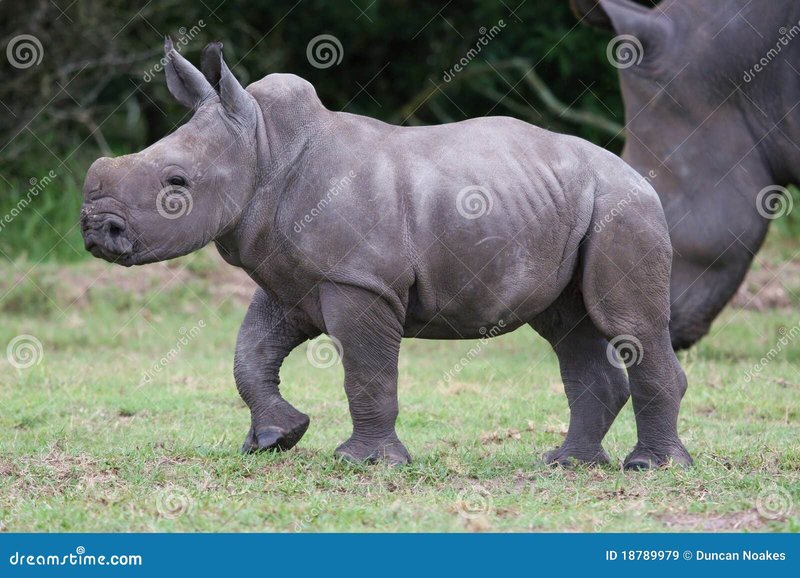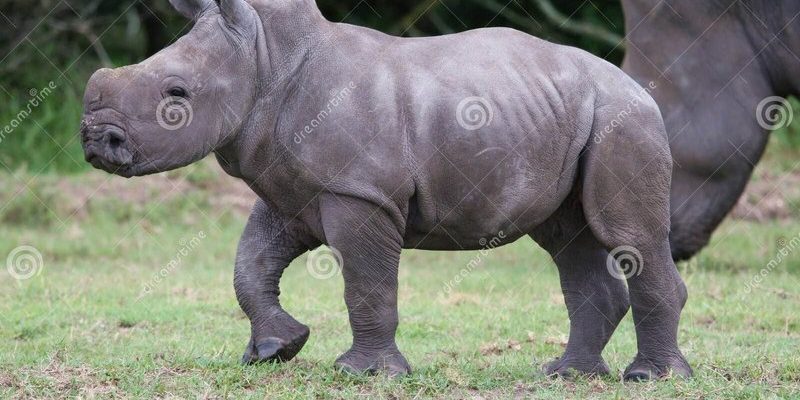
In the wild, raising a young rhino is no easy feat. These large mammals face various challenges, including finding food, navigating their habitat, and keeping their babies out of harm’s way. Let’s dive into the world of rhino parenting and explore how these majestic animals raise their young against the backdrop of the African savanna and Asian jungles.
Understanding Rhino Family Structures
Rhinoceroses are generally solitary creatures, but when it comes to raising their young, the dynamics change slightly. Female rhinos typically have strong bonds with their calves, while males tend to live independently. A mother rhino, known as a cow, usually gives birth to a single calf after a gestation period of around 15 to 16 months. That’s nearly a year and a half of parenting preparation!
Once the calf is born, the mother devotes a significant amount of time to caring for it. Rhinoceroses are highly protective, and the cow is no exception. She will keep her calf close by, often guiding it through their habitat to help it learn essential survival skills. Here’s the thing: a young rhino is vulnerable to predators, so this protective nature is crucial.
Over time, a cow will nurture her calf for about three years. During this period, the young rhino learns how to forage for food, navigate its environment, and understand social cues from its mother. It’s like a hands-on workshop in the wild, filled with learning experiences that will help the calf become a strong, independent adult.
Feeding and Foraging Together
When it comes to feeding, mother rhinos are excellent teachers. A cow will often lead her calf to various feeding grounds, showing them what to eat and where to find it. Rhinoceroses are herbivores, and they mainly feed on grasses, leaves, and shrubs. Honestly, it’s a bit like teaching a child about healthy eating—cows guide their calves to the right plants.
In the wild, young rhinos start by nibbling on their mother’s meals. They learn to forage by imitating her, which is essential for their growth and development. Cows will often graze near water sources, which also helps the calf learn about hydration.
Interestingly, the mother will sometimes leave her calf at a safe distance while she grazes. This way, the young rhino can practice foraging on its own while still being close enough to receive guidance. It’s a delicate balance that encourages independence while ensuring safety.
Lessons About Danger: Protecting the Calf
One of the most crucial aspects of raising young rhinos is teaching them about danger. In the wild, threats can come in many forms, from predators to other rhinos. A mother rhino’s protective instincts kick in as soon as the calf is born. She constantly surveys her surroundings, using her keen sense of hearing and smell to detect potential threats.
Mother rhinos will often make loud vocalizations, known as grunts and snorts, to alert their calves of danger. When a threat arises, she might charge or use her size to deter predators. You might be wondering how effective this is—well, a full-grown rhino can weigh up to 2,300 kg (about 5,000 lbs)! That’s a lot of muscle for a predator to contend with.
As they grow, mother rhinos will provide hands-on lessons in recognizing different dangers. This education includes teaching calves to flee and hide when they sense danger. It’s the same principle as teaching a child to avoid risky situations, but in the wild, those lessons can be a matter of life or death.
Social Dynamics and Bonding
While rhinos are typically solitary, they do engage in social behaviors, especially when it comes to mothers and their calves. The bond between a cow and her calf is incredibly strong. There are times when you may spot mothers and their young engaging in playful behavior, like mock sparring or running around. This play is not just fun—it helps build physical strength and coordination in the young rhino.
Interestingly, mother rhinos will sometimes “groom” their calves, using their mouths to clean their skin. This bonding behavior creates a sense of comfort and security for the young rhino, reinforcing their relationship. It’s like a little hug from mom to say, “You’re safe with me.”
Moreover, mother rhinos can recognize their calves’ vocalizations even among other young rhinos. This unique ability helps them stay connected in social settings, ensuring they can quickly reunite if separated. It’s a heartwarming example of the deep connections these animals form in the wild.
When Calves Become Independent
As calves approach the age of three, they start to transition toward independence. This process can be bittersweet for the mother rhino, who has spent years nurturing and protecting her young one. During this time, the calf becomes more adventurous, exploring farther from its mother but still relying on her for guidance.
You might see them starting to graze on their own and practice using their horns for defense—yes, rhinos are equipped with some impressive tools for survival! This step toward independence is essential for the calf, as it prepares them for life as an adult in the wild.
Eventually, the young rhino will leave its mother’s side to establish its territory. The mother will continue to live her life, but she’ll always remember the bond she shared with her calf. It’s a bit like sending a young adult off to college—exciting, but filled with a touch of sadness.
The Importance of Conservation
With their unique parenting styles and the incredible bond between mothers and calves, rhinos play a vital role in their ecosystems. However, they face significant threats from poaching and habitat loss. It’s crucial to support conservation efforts to protect these magnificent creatures and their young.
By raising awareness about the challenges rhinos face, we can contribute to their future. Supporting wildlife reserves and organizations dedicated to protecting rhinos can make a big difference. Honestly, every little bit helps—and it’s a way to ensure that future generations can marvel at these amazing animals.
In conclusion, observing how rhinoceroses raise their young in the wild gives us insight into their complex social structures and nurturing behaviors. These animals remind us that nurturing is a universal instinct, transcending species. As we learn more about them, we can better appreciate the delicate balance of life in the wild and do our part to protect it.

